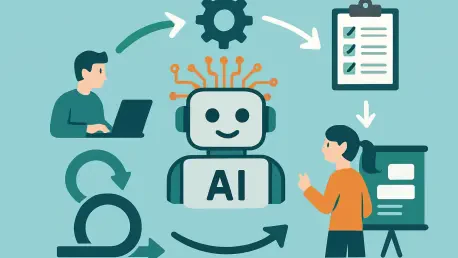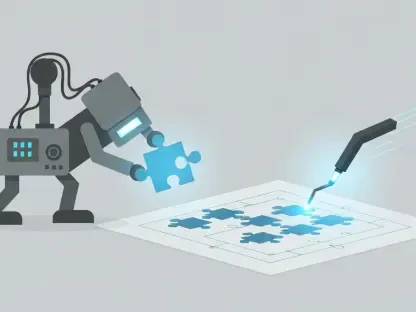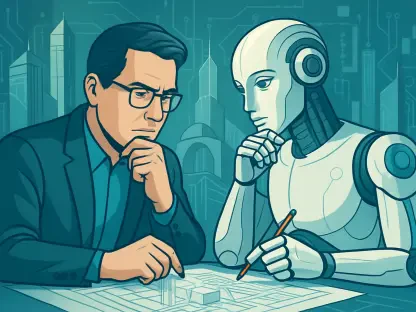Imagine a software development team racing against tight deadlines, juggling sprint planning, risk analysis, and stakeholder communication, only to find repetitive tasks eating into their creative bandwidth, and wondering if AI agents could step in to alleviate this burden. Could these agents act as autonomous partners within Agile methodologies like Scrum? This question drives the exploration of integrating artificial intelligence into project management frameworks, with the potential to revolutionize how teams operate by automating routine processes and enhancing data-driven insights.
At the heart of this discussion lies a critical inquiry: can AI agents, such as advanced tools with autonomous modes, truly serve as valuable assets for Agile teams by detecting key patterns in communication and data, or are they merely sophisticated automation tools with limited real-world impact? The promise of AI lies in its capacity to handle mundane tasks, freeing team members to focus on strategic goals, yet skepticism remains about its ability to adapt to the fluid, collaborative nature of Agile environments.
Significant challenges persist in aligning AI capabilities with the dynamic needs of Agile workflows. The necessity for real-time adaptability, nuanced decision-making, and seamless team interaction often outstrips current AI functionalities, raising doubts about whether these tools can meet the high expectations set for them. This sets the stage for a deeper analysis of their practical utility and transformative potential.
Background and Significance of AI in Agile Environments
The intersection of AI and Agile practices has gained momentum as development cycles demand greater efficiency and precision in decision-making. With the pressure to deliver faster results without sacrificing quality, teams are increasingly turning to technology to streamline operations. AI agents offer a glimpse of a future where data-driven insights could redefine sprint planning, risk mitigation, and team coordination in fast-paced environments.
This topic holds immense relevance as AI has the potential to address longstanding pain points in Agile processes by automating repetitive tasks like documentation and basic analysis. By doing so, it could enable teams to channel their efforts into innovation and problem-solving, while also making tools more accessible to non-technical members who may struggle with traditional systems. Such democratization could reshape team dynamics and enhance overall productivity.
Beyond immediate benefits, the broader industry impact cannot be overlooked. The integration of AI into Agile workflows might pave the way for more inclusive project management practices, provided human oversight remains central to complex decisions. This balance between automation and human judgment underscores the significance of studying AI’s role, as it could fundamentally alter how software development and other iterative processes are conducted.
Research Methodology, Findings, and Implications
Methodology
To assess the effectiveness of AI agents in Agile settings, an in-depth evaluation was conducted using real-world scenarios as a testing ground. The analysis focused on practical experiments with a prominent AI tool’s autonomous mode, applied to tasks such as product discovery, sprint reporting, and retrospective design. These tests aimed to simulate typical Agile challenges and gauge the tool’s ability to perform independently.
Various techniques were employed to ensure a comprehensive assessment, including hands-on application across different Agile activities and scrutiny of integration with external platforms. Attention was also paid to user accessibility, examining barriers faced by non-technical team members and limitations tied to specific account types, such as restricted access to advanced features. This approach provided a holistic view of AI’s current capabilities within collaborative frameworks.
The evaluation process considered both technical performance and practical usability, ensuring that results reflected real team environments. Constraints like inconsistent tool access or the need for manual input were documented to highlight gaps between expectation and execution, forming a robust foundation for the findings that emerged from this investigation.
Findings
The results of testing revealed a noticeable disparity between the anticipated autonomy of AI agents and their actual performance in Agile contexts. Key observations pointed to deficiencies in critical areas such as task scheduling, the production of nuanced outputs, and seamless integration with commonly used tools. For instance, access restrictions often disrupted workflows, necessitating workarounds or alternative solutions.
Specific shortcomings were evident in complex tasks requiring contextual understanding, where the AI tool often delivered subpar results compared to manual efforts. Performance inconsistencies further highlighted the tool’s reliance on human intervention, positioning it more as a supportive research assistant than a fully independent agent capable of driving Agile processes on its own.
Despite these limitations, some adaptability was noted, such as the ability to pivot to alternative resources when primary options were unavailable. However, this flexibility did not fully compensate for the overarching shortfall in meeting ambitious expectations, underscoring that current AI agents fall short of the transformative vision many hold for their application in iterative development cycles.
Implications
From a practical standpoint, these findings suggest that while AI agents are not yet poised to revolutionize Agile workflows, they can provide immediate value in supporting roles. Tasks such as pattern recognition in team feedback, synthesizing documentation, and aiding in preliminary research stand out as areas where AI can enhance efficiency without requiring full autonomy.
Theoretically, the trajectory of AI development indicates potential for bridging existing gaps over time. As tools evolve, their capacity to handle intricate decision-making and integrate more seamlessly with Agile systems could grow, aligning closer to visionary applications. This points to a future where AI might play a more central role in project management methodologies.
On a societal and industry level, the push for accessible AI solutions remains critical to ensure adoption across diverse roles within Agile teams. From product owners to facilitators, making these tools user-friendly for all members could foster wider acceptance and impact, provided that development prioritizes inclusivity alongside technical advancements.
Reflection and Future Directions
Reflection
Evaluating AI agents in Agile settings brought to light several challenges, including technical constraints that hindered consistent performance. Issues such as dependency on manual input and variable tool reliability often complicated the testing process, revealing the limitations of current technology in dynamic, team-oriented contexts.
Navigating these hurdles required a shift in focus toward more immediate, practical applications of AI as analytical support rather than autonomous entities. This adjustment allowed for a clearer understanding of how existing strengths, like data processing, could be leveraged effectively while acknowledging areas needing improvement.
Looking ahead, there is room to expand this exploration by delving into custom integrations that might enhance AI utility. Testing across a wider array of Agile frameworks beyond standard methodologies could also yield valuable insights, broadening the scope of how these tools might fit into varied team structures and processes.
Future Directions
Research into AI agents for Agile workflows should prioritize the development of more autonomous features, such as independent task scheduling and sophisticated decision-making capabilities. Enhancing these aspects could push AI closer to fulfilling the ambitious roles envisioned for streamlining development cycles and reducing manual workload.
Another promising avenue lies in improving accessibility to empower non-technical users within teams. Simplifying interfaces and reducing reliance on specialized skills or premium accounts could lower barriers, ensuring that AI tools serve a broader range of roles and contribute to more equitable adoption in collaborative settings.
Long-term studies are also needed to assess the impact of AI integration on team collaboration and creativity. Understanding how automation influences human judgment and innovation will be key to striking a balance, ensuring that technology complements rather than overshadows the essential human elements of Agile practices.
Synthesizing the Promise and Challenges of Agile AI Agents
The exploration of AI agents in Agile workflows uncovers a stark contrast between their visionary potential and present-day realities. On one hand, the prospect of automating tasks like product discovery and sprint reporting holds immense promise for boosting efficiency and allowing teams to prioritize strategic efforts. On the other hand, technical constraints and limited autonomy reveal that current tools are not yet equipped to fully realize these aspirations.
Despite these gaps, AI agents offer tangible benefits as complementary tools in today’s Agile environments. Their ability to assist with sentiment analysis, documentation updates, and preliminary research enhances productivity in specific areas, provided human oversight guides complex decision-making. This supportive role marks a pragmatic starting point for leveraging technology without overextending its capabilities.
Looking back, the journey of integrating AI into Agile practices highlighted both enthusiasm and caution. The findings underscored a technology still maturing, yet they also paved the way for actionable next steps. Moving forward, stakeholders should focus on iterative enhancements to AI autonomy and accessibility, while fostering pilot programs to test evolving tools in diverse team settings. Encouraging collaboration between developers and Agile practitioners could further refine these agents, ensuring they evolve into true partners that amplify human ingenuity rather than merely automate routine tasks.









